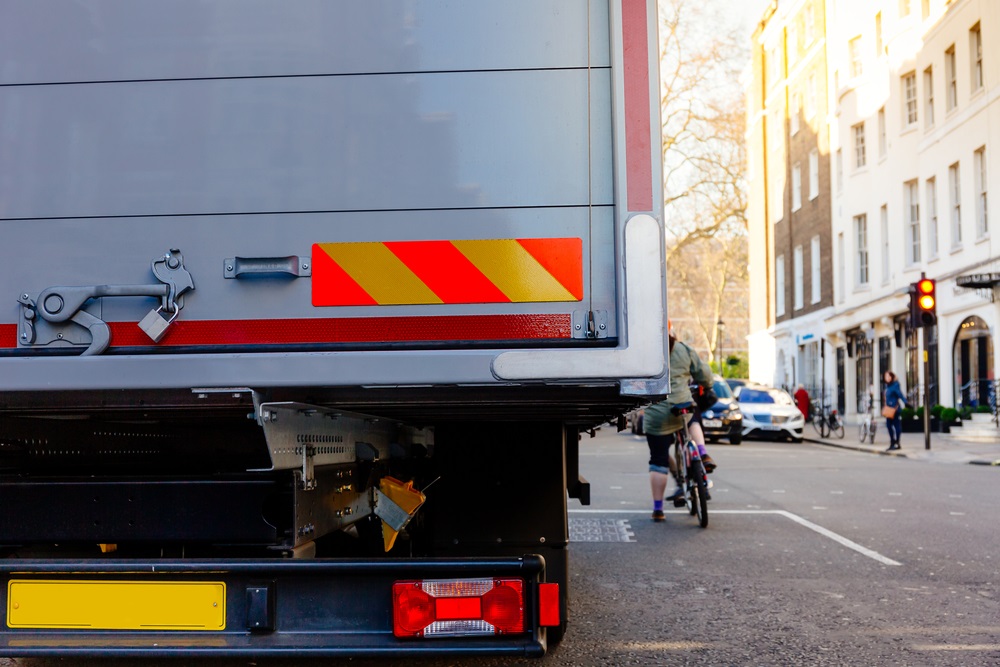Call for consistency in Clean Air Zone roll-out
Logistics firms require ‘consistency’ in the implementation of Clean Air Zones in towns and cities across England, a transport lobby group has said.
Speaking at the Freight in the City Conference in London yesterday (6 November), Nathalie Chapman, head of south of England and urban policy at the Freight Transport Association, outlined the challenges faced by FTA’s members in responding to requirements from local authorities around vehicle emissions.

Fleet operators need consistency in Clean Air Zones, FTA has said
A number of local authorities are currently exploring the potential introduction of Clean Air Zones, which could see charges levied on road users for entering areas where levels of nitrogen dioxide air pollution have been found to exceed legal limits.
In her presentation in the Conference’s first session, which was centred around emissions control, Ms Chapman told delegates that Defra’s CAZ framework provides ‘a level of commonality’ in the design of CAZs by councils — but that there is a mixture of approaches forming at a local level.
She said: “Even though we have this framework, there is that lovely word of localism, and the detail of the implementation is going to be determined at that local level. The daily charge, the zone geography and the payment systems will be for the cities themselves to determine.
“For us as an industry, we know no boundaries, we operate everywhere. The concern about having a patchwork of different approaches is a real worry.”
Payment
A particular area she highlighted for concern for businesses in the haulage and freight sectors was the implementation of a charging portal for Clean Air Zones — and whether users would have to register for multiple systems to operate in different cities.
She added: “What we need is the cities to work together on a single charging and registration portal. I am aware that I think Southampton, Birmingham and Leeds are having that conversation, which is welcome. From an industry point of view, if we have got to register for an individual scheme for each of the clean air zones, the bureaucratic nightmare that will be will be horrendous.
“But for the cities they have got to each individually set up their own charging system that will be really costly, so if they can share the cost and share the pain I think there are wins on all sides.”
Retrofit
On the operational side, Andy Eastlake, managing director of the Low Carbon Vehicle Partnership set out the options for HGV operators in meeting Clean Air Zone standards — including vehicle retrofits.

Andy Eastlake – LowCVP managing director
He said: “We do have a national consistent framework. Part of my job is to help identify how you as operators can continue to do your business with confidence. The way you can do that is, number one: have a Euro VI vehicle, you will not get fined for going into a Clean Air Zone.
“That is a challenge because we can’t change our whole fleet to Euro VI overnight, everyone understands that. So we need some other tools in the box, and therefore need to think about retrofits.”
Mr Eastlake told delegates that operators could choose not to operate within CAZs to avoid potential charges, which could total up to £100 per vehicle in some areas, opt to pay the penalties, or rearrange fleets to move non-compliant vehicles out of CAZs.
He added: “You can buy a new compliant vehicle, or you can retrofit. Those are the only two that will actually reduce the NOx. The top three just move it around. If you are in Birmingham and they introduce a class D charging zone and you move all of your trucks into Coventry I can imagine that they won’t take too long to introduce a clean air zone of their own.”
CVRAS
Mr Eastlake also gave delegates an insight into ongoing work on the Clean Vehicle Retrofit Accreditation Scheme (CVRAS) — which provides a certification standard for emission-reduction technology to meet requirements set out in the government’s Clean Air Zone Framework.

Funding has recently been secured to expand the scheme to include retrofit technologies for vans, buses and trucks — which are thought to contribute to more than 50% of nitrogen oxides emitted by road transport (see airqualitynews.com story).
Also speaking during the session was Bob Moran, head of environment strategy at the Department for Transport (DfT).
Dr Moran told delegates that ‘investing in clean air and doing more to tackle air pollution is a priority’ and outlined some of the policies contained within the government’s Road to Zero strategy to push this goal.
This includes work to establish a standard for ultra low emission trucks ‘to provide certainty on emissions standards’ in the heavy vehicle market.
He said: “We will set out exactly what we mean by a low emission truck and how that is different to an ultra-low emission truck. We are going to do that because local areas need to be consistent in their application of Clean Air Zones in the future otherwise everybody, not just government, policy makers or operators is going to be really confused.”







 Network
Network